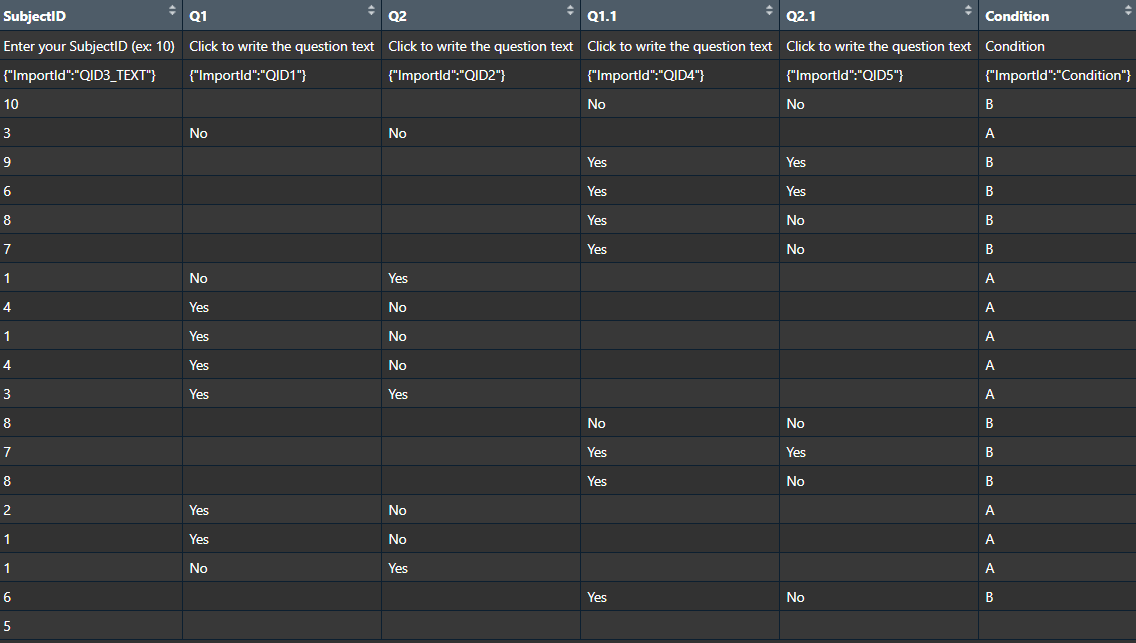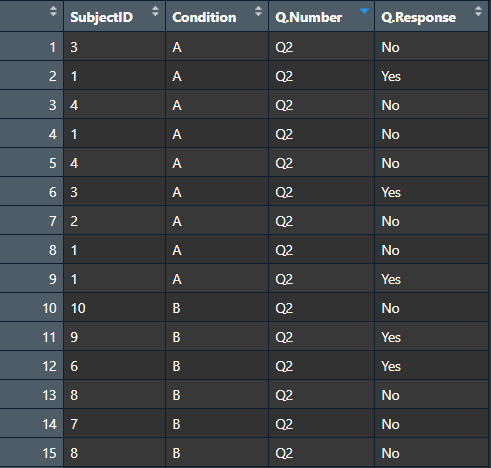Currently, when I export the results of my Qualtrics survey, the output file contains one row per unique survey taken (which in this context corresponds to one row per person). Each question in the survey appears as a new column on that row.
However, to do the statistical analysis I need in R or Pandas, I need a dataframe with one row per observation. In other words, a file where each response to each question is on a separate row, with the participant ID, question number, etc recorded in separate rows.
Visually:
Current Qualtrix export
SubjectID | Condition | Q1 | Q2 | ...
14 | A | Yes | No | ...
26 | B | No | No | ...
What I need:
SubjectID | Condition | Q.Number | Q.Response
14 | A | 1 | Yes
14 | A | 2 | No
26 | B | 1 | No
26 | B | 2 | No
Does anyone know how to export data in this format or any automated tools to assist that process?
Exporting Qualtrics data as a dataframe for R/Pandas
Enter your E-mail address. We'll send you an e-mail with instructions to reset your password.







 Hope this helps!
Hope this helps!